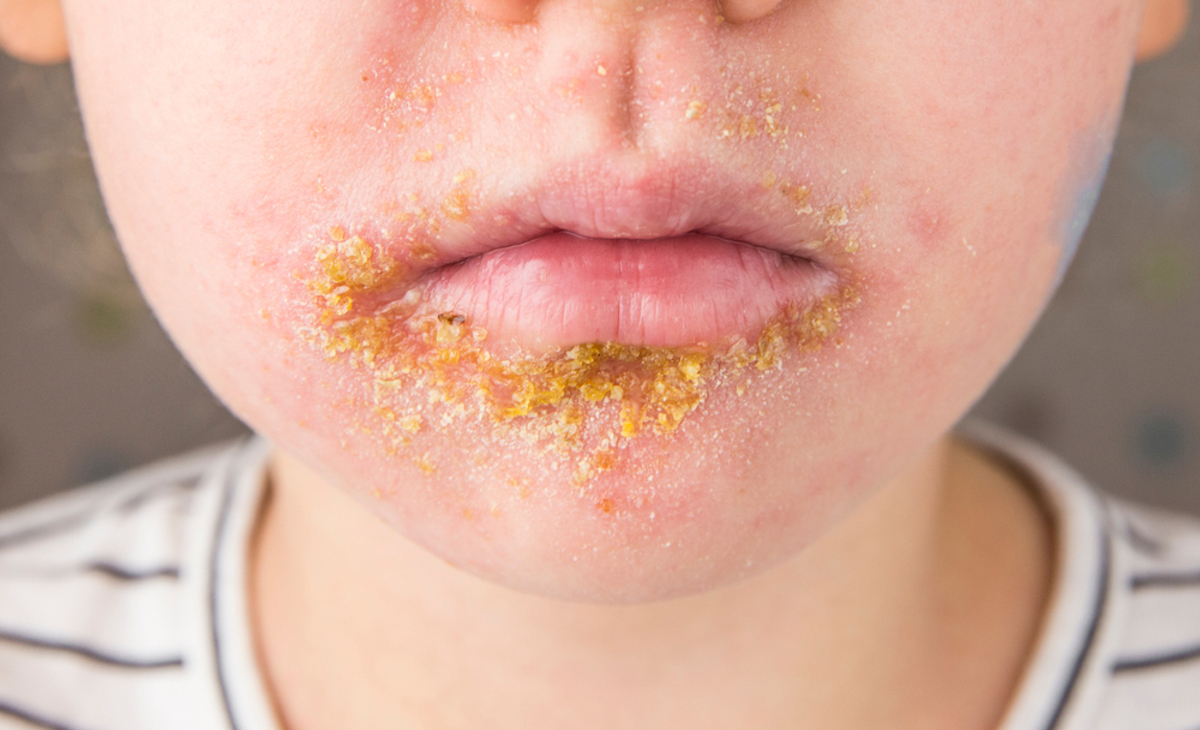Impetigo is a skin disorder that affects, particularly children. It’s the most common skin infection in children between the ages of 2 and 5. This does not mean that adults cannot get it, just that children are more likely to be infected. About 11 million impetigo infections are diagnosed each year. If you have or know children in this age group, it’s important to know how it’s caused, how to recognize it, and what possible treatment options are.

What Is Impetigo?
Impetigo, then, is a skin disease that causes infections. It is caused by one or both bacteria called streptococcus and staphylococcus aureus. When someone has a cut, break, or bite that opens the skin, the above-mentioned bacteria can enter the body and create an impetigo rash. Note that there are also frequent cases of someone contracting impetigo even though he or she had no wounds around the time of infection.
The skin condition is (very) contagious, but the big question is: how does it spread? Well, when someone touches these sores (and then touches him or herself) they get infected as well. This includes contact sports, like wrestling & water polo. Impetigo also spreads via shared clothes, bedding, towels, etc. This makes this skin infection contagious by touch, so make sure to avoid contact as much as possible.
Are There Any Risk Factors?
You already know that especially kids are easily infected by impetigo, but a few factors increase the risk even more (for adults). These risk factors include:
- Live in close contact or crowded households
- Live in a tropical climate
- Play contact sports, where cuts & scrapes are common
- Having poor personal hygiene
- Have another skin condition, like eczema or scabies
- Having a weakened immune system
- Have diabetes
A child can also be more at risk when it has an insect bite, a fungal infection, or body lice on the skin that is exposed. Although it’s highly contagious, fortunately, it is not very life-threatening. Still, it is important to recognize it in time and have it treated. This makes others less likely to become infected and treat the symptoms. In addition, not having impetigo treated can cause unpleasant complications. These include cellulitis, kidney problems, and scarring.

Symptoms of Impetigo
As it is, skin infection is the major symptom, the infection on the skin. Usually, this is a rash with red sores around the mouth and nose. Note! This is not always the case, impetigo can also be on the arms or legs. These sores will burst open within a few days and ooze for a few days. After a few days, the rash becomes a honey-yellow-looking crust. This will heal in most cases without leaving scars. Other symptoms are mild itching and soreness.
In more severe cases, the infection can spread to deeper layers of the skin and turn into ecthyma – a more severe form of impetigo. The rash will then have pus-filled bumps with a way darker crust and ticker than a normal impetigo rash. This form also itches a lot worse than normal Impetigo. In case you – or your child – have ecthyma: Do Not Scratch! This can lead to serious infections and permanent skin damage, like scarring and changes in skin color.
Are There Any Treatment Options?
If you’ve recognized the symptoms of impetigo, make sure to visit your professional healthcare provider. He or she will do a physical exam and if needed to prescribe the right treatment. Generally, this is a course of antibiotics. For a mild form, an antibiotic ointment is often prescribed; if the rash is moderate to severe, a course of oral antibiotics is usually prescribed.
Prevent Impetigo from Spreading to Others
In addition, it’s important to prevent the skin infection from spreading to others. Prevention tips include:
- Keep your hands clean as much as possible
- Practice good hygiene
- Avoid scratching as much as possible
- Clean wounds properly
- Wash bedding, underwear, and towels in hot water
It’s important to always seek medical treatment when you suffer – or think you suffer – from a skin disorder. Your healthcare provider will look at you, examine your symptoms, make the right diagnosis, and start an effective treatment plan. There are so many types of skin disorders, that the ones we have discussed are just the tip of the iceberg. That’s why it’s important to do your online research first. We are here to help you, so start your search here:

